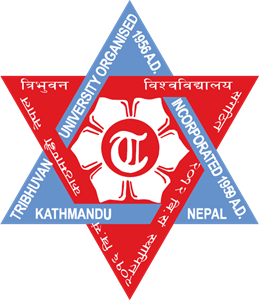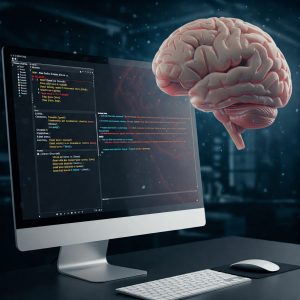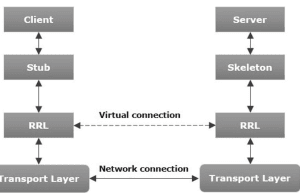TU BCA Computer Networking Syllabus

Sure! Here is the Computer Networking syllabus formatted as per your request:
Course Title: Computer Networking (3 Cr.)
Course Code: CACS303
Year/Semester: III/V
Class Load: 6 Hrs./Week (Theory: 3 Hrs., Practical: 3 Hrs.)
Course Description
This course introduces the fundamental concepts of computer networking, including network architectures, protocols, and security. Students will gain an understanding of networking layers, routing, switching, and communication systems. Practical knowledge of configuring and managing networks is also emphasized.
Course Objectives
The primary objectives of this course are:
- To provide foundational knowledge of computer networking principles.
- To understand the concepts of network layers, protocols, and their applications.
- To train students to design, implement, and manage computer networks, while addressing security concerns.
Course Contents
Unit 1: Introduction to Computer Networking [6 Hrs.]
- Network Types: LAN, WAN, MAN, and PAN
- Network Topologies: Star, Bus, Ring, Mesh
- Basic Networking Concepts: Bandwidth, Throughput, Latency, Jitter
- OSI and TCP/IP Models
- Types of Network Communication: Unicast, Broadcast, Multicast
- Basic Network Components: Routers, Switches, Hubs, Bridges, Modems
Unit 2: Data Communication and Transmission [8 Hrs.]
- Analog and Digital Signals
- Modulation Techniques
- Transmission Media: Copper Cable, Fiber Optics, Wireless, Satellite
- Transmission Impairments: Noise, Distortion, Attenuation
- Error Detection and Correction
- Data Compression Techniques
- Multiplexing Techniques: FDM, TDM, WDM
Unit 3: Network Layer and Routing [10 Hrs.]
- IP Addressing: IPv4 and IPv6
- Subnetting and Subnet Mask
- Routing Algorithms: Distance Vector, Link State, RIP, OSPF, BGP
- Routing Tables: Structure, Construction, and Management
- CIDR (Classless Inter-Domain Routing)
- Network Address Translation (NAT)
- VLANs and VPNs
Unit 4: Transport Layer and Protocols [8 Hrs.]
- Transport Layer Functions: Segmentation, Flow Control, Error Control
- Protocols: TCP, UDP
- Connection-Oriented vs. Connectionless Communication
- TCP Handshake Process: 3-way Handshake
- Congestion Control and Flow Control
- Application Layer Protocols: HTTP, FTP, SMTP, POP3, DNS
Unit 5: Network Security [10 Hrs.]
- Security Threats and Attacks: DDoS, Man-in-the-Middle, Phishing
- Firewalls and Security Protocols: IPsec, SSL/TLS, VPN
- Encryption Techniques: Symmetric and Asymmetric Encryption
- Public Key Infrastructure (PKI)
- Network Security Measures: Authentication, Access Control
- IDS/IPS: Intrusion Detection Systems, Intrusion Prevention Systems
- Network Security Tools: Wireshark, Nmap, Nessus
Unit 6: Wireless and Mobile Networks [8 Hrs.]
- Wireless Network Technologies: Wi-Fi, Bluetooth, Zigbee, NFC
- Mobile Network Protocols: GPRS, EDGE, 3G, 4G, 5G
- Mobile IP
- Wireless Security Issues
- Wireless LAN (WLAN) Design
- Cellular Networks and Mobile Communication
Laboratory Work [32 Hrs.]
- Networking Configuration: Setting up LANs and WANs
- Router and Switch Configuration
- IP Addressing and Subnetting
- TCP/IP Configuration
- Packet Sniffing and Analysis
- Firewall Configuration
- Network Security Implementations
- Practical Implementation of Routing Algorithms
- Wireless Networking Configuration
Teaching Methods
The course will employ a variety of teaching methods, including:
- Class Lectures: For theoretical explanations of networking concepts.
- Laboratory Sessions: For hands-on networking experience.
- Group Discussions: To promote collaborative learning.
- Case Studies: To explore real-world networking problems.
- Guest Lectures: From industry experts to give practical insights.
- Assignments and Projects: Both theoretical and practical to reinforce learning.
Evaluation
Final Examination Format (FM = 60, Time = 3 Hrs.)
| SN | Question Type | Number of Questions | Marks per Question | Total Marks |
|---|---|---|---|---|
| 1 | Group A: Objective Type (Multiple Choice) | 10 | 1 | 10 |
| 2 | Group B: Short Answer Questions | 7 | 5 | 30 |
| 3 | Group C: Long Answer Questions | 3 | 10 | 20 |
Textbooks
- Computer Networking: A Top-Down Approach (7th Edition), James F. Kurose, Keith W. Ross, Pearson Education.
- Data and Computer Communications (10th Edition), William Stallings, Pearson Education.
Reference Books
- Networking Essentials (6th Edition), Jeffrey S. Beasley, Pearson Education.
- TCP/IP Illustrated, Volume 1: The Protocols, W. Richard Stevens, Addison-Wesley.
- Network Security Essentials: Applications and Standards (6th Edition), William Stallings, Pearson Education.



